Content warning: This article concerns censorship of motion pictures. It contains mentions of difficult topics including violence, death, rape and sexual assault, drug and alcohol use, cruelty to animals and children, and racism. Some of the films mentioned in this article may contain depictions of this content. This article also contains a staged photograph depicting a violent death.
The US Caribbean & Florida Digital Newspaper Project does not endorse the violence, racism, or otherwise offensive content in the films.
The Pre-Code Film Festival is an event intended to highlight cinema advertisements from historic papers from the US Virgin Islands digitized through NDNP by reconnecting the newspaper content to the real-life movie-going experiences of its readers. The festival films were all advertised in either the St. Croix Avis or St. Croix Tribune and shown in the Christiansted Theatre on St. Croix.
Films will be streamed in the Scott Nygren Studio in Library West on the University of Florida Campus Thursdays at 1 pm August 3, 10, and 17 and are all available for free, public at-home streaming. See the links at bottom of article to watch online.
For the August 2023 Pre-Code Film Festival schedule scroll or jump to the bottom of the page.
What are pre-code films?
Pre-code films are movies produced before the widespread enforcement of the Motion Picture Production Code, commonly known as the Hays Code, named after Will H. Hays, president of the Motional Picture Producers and Distributors of America from 1922 to 1945.
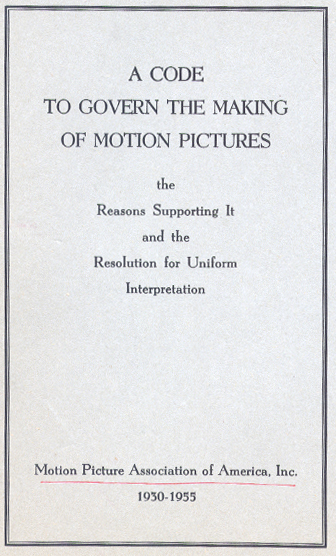
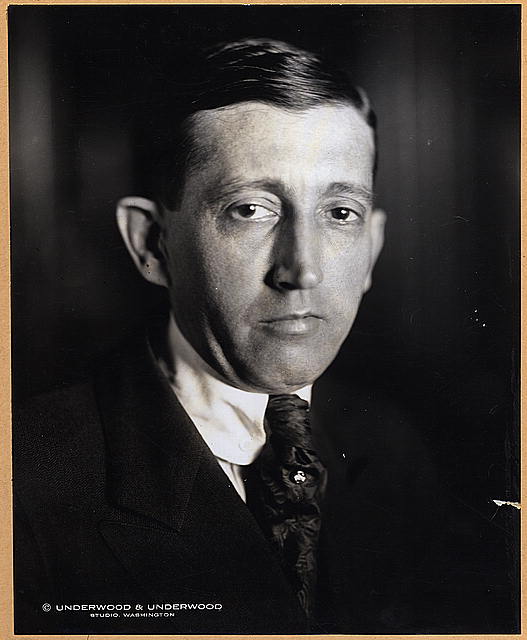
The code was adopted in 1930 and enforced from 1934 into the 1960s. In 1968 the code was replaced with the Motion Picture Association of America film ratings which are still used in the US today.
What is the Hays Code?
The Hays Code specified what content was acceptable and unacceptable for films for public audiences in the US. One of its founding principles is that “No picture should lower the moral standards of those who see it.”
The code banned:
- Brutal killings
- Detailed depictions of how to commit crimes
- Drug trafficking
- Excessive depictions of liquor
- Adultery treated attractively
- Sex scenes
- Explicit depictions of seduction or rape
- Sex perversion
- White slavery
- Miscegenation
- Sex hygiene and venereal disease
- Scenes of childbirth
- Children’s genitals
- Vulgarity
- Obscenity
- Profanity
- Nudity
- Indecent exposure
- Salacious, indecent, or obscene titles
- Dances suggesting or representing sexual actions or emphasizing indecent movements
- Mocking of religion
It also provided guidelines for other topics, including the American flag, appropriate settings, depictions of alcohol use, and revenge plots. It also required some sexual plot points, including rape, adultery, and scenes of passion be implied rather than overt.
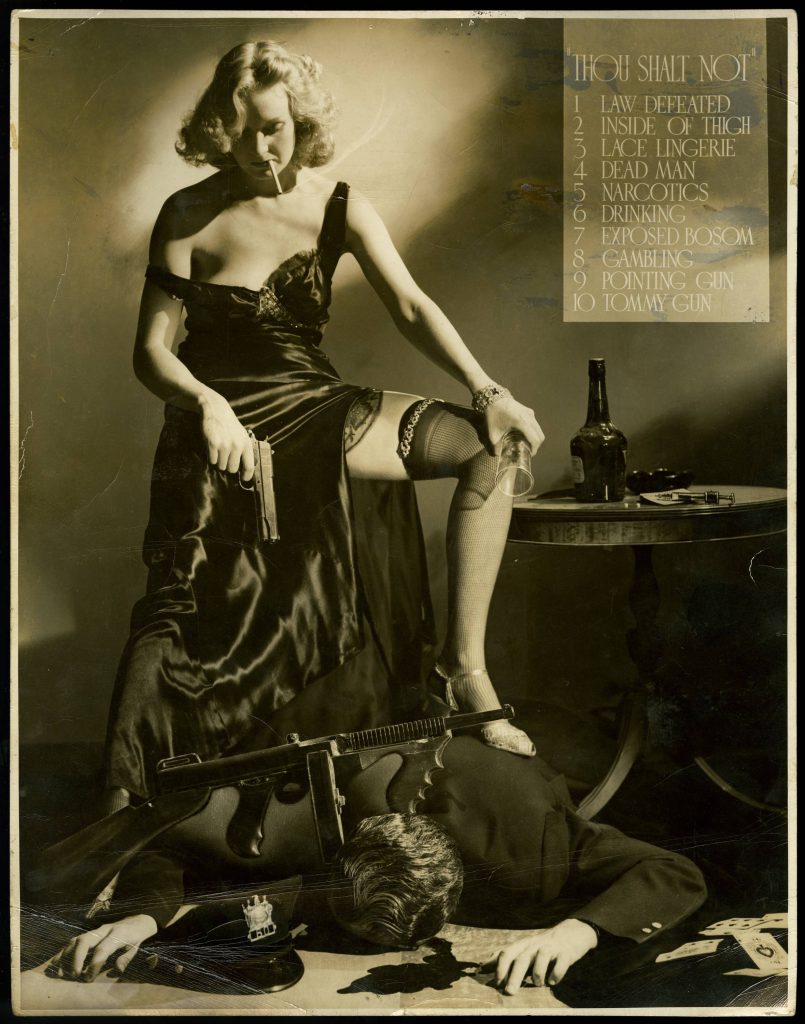
Whitey Schafer’s satirical photograph Thou Shalt Not (1941) mocks the code and lists the top 10 Hays Code Don’ts in the upper right corner.
Why was the Hays Code Adopted?
The Hays Code was adopted by the movie industry to retain control of the industry through self-regulation and streamline the production and distribution process for US films.
Prior to and after the Code, state and local film censorship boards determined what was acceptable or unacceptable for their audiences. This meant that US studios producing films for national audiences risked bans in large markets over questionable content. Sometimes films were edited and multiple versions created to pass the censorship boards, requiring more time, money, and work by the studios.
The Roaring Twenties, the period immediately preceding the creation of the Code, saw many shocking Hollywood scandals, including the murder of director William Desmond Taylor and alleged violent rape of Virginia Rappe by the well-known star Roscoe “Fatty” Arbuckle. High-profile trials and investigations drew increased scrutiny from film censorship boards and legislators who began passing film censorship bills and decency laws. In 1921 alone over one hundred film censorship laws were put forward.
The Motion Picture Producers and Distributors of America (later the Motion Picture Association) decided it was better to police themselves than to try to wade through complex and constantly changing state and local decency laws, so the code was adopted in 1930 and enforced beginning in 1934.
Where can I watch pre-code films?
The US Caribbean & Florida Digital Newspaper Project is hosting a summer film festival for pre-code movies advertised at the St. Christiansted theater in St. Croix, the US Virgin Islands. Read the ads then see the films yourself!
Films will be shown in the Scott Nygren Studio on the 2nd floor of Library West Thursdays at 1pm August 3, 10 & 17.
You can also stream the films online (see links below). Watch them with us or on your own!
Pre-Code Film Festival Schedule
August 3: Riders of Destiny (1933)
August 10: The Unholy Three (1925)
August 17: Slow as Lightning (1923)
The films will be shown in the Scott Nygren Studio on the 2nd floor of Library West on the University of Florida Campus at 1pm.
You can also watch from home by clicking the movie titles in the schedule.
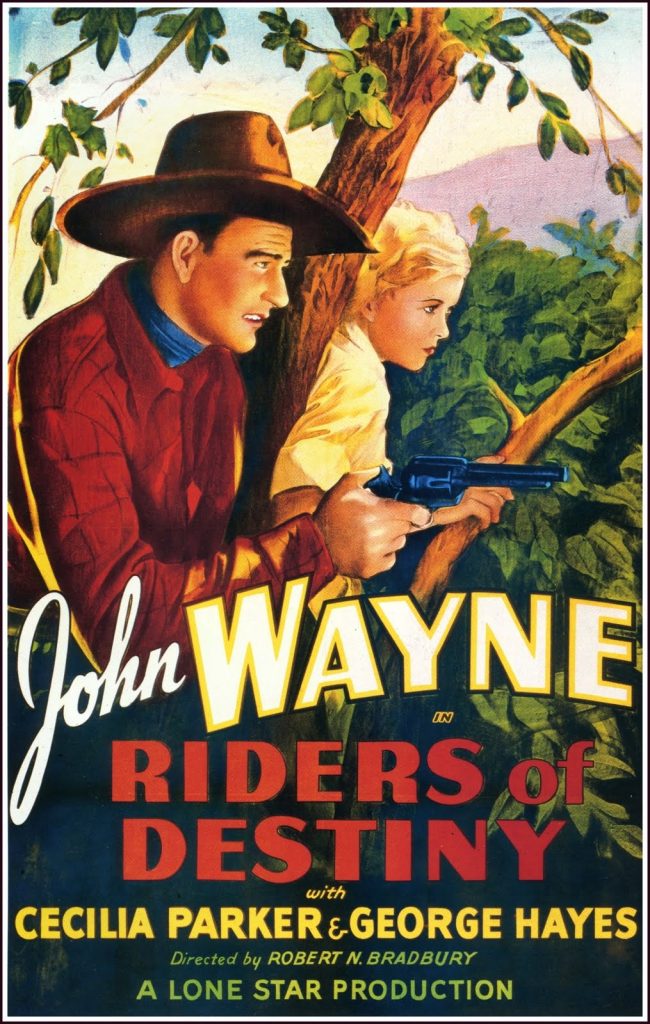
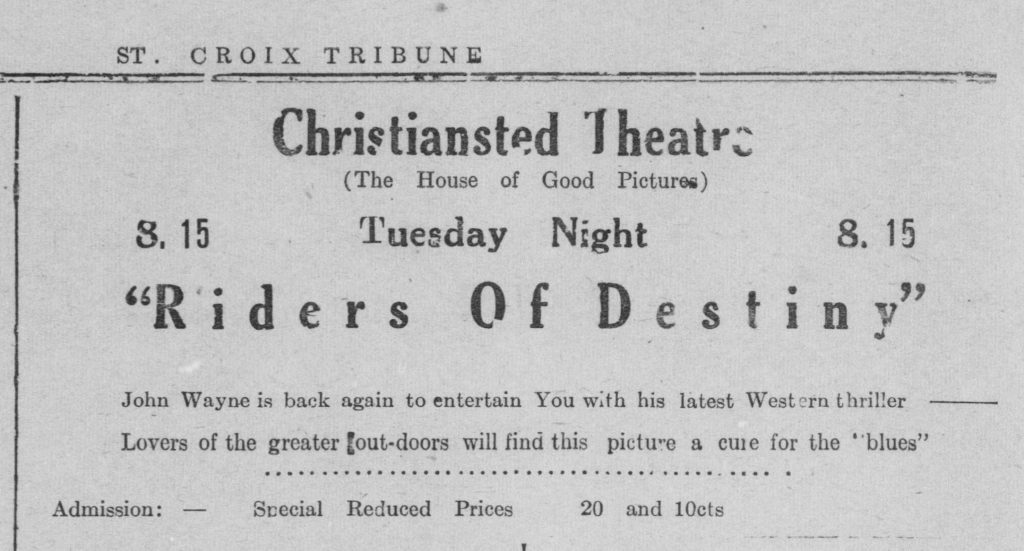
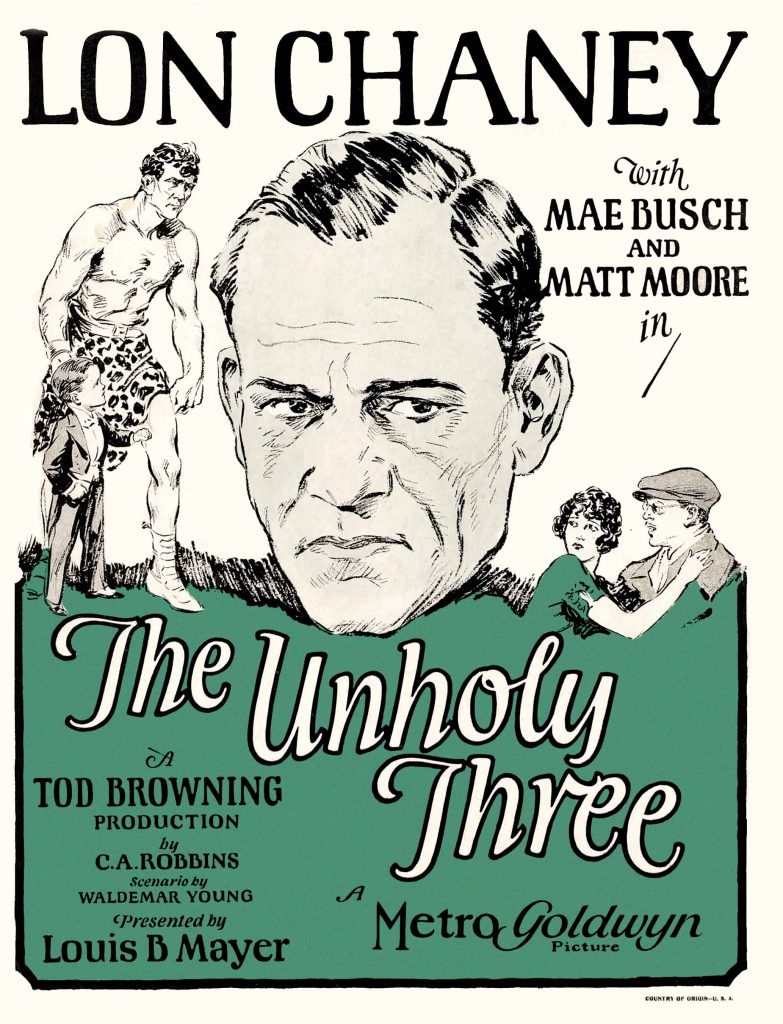
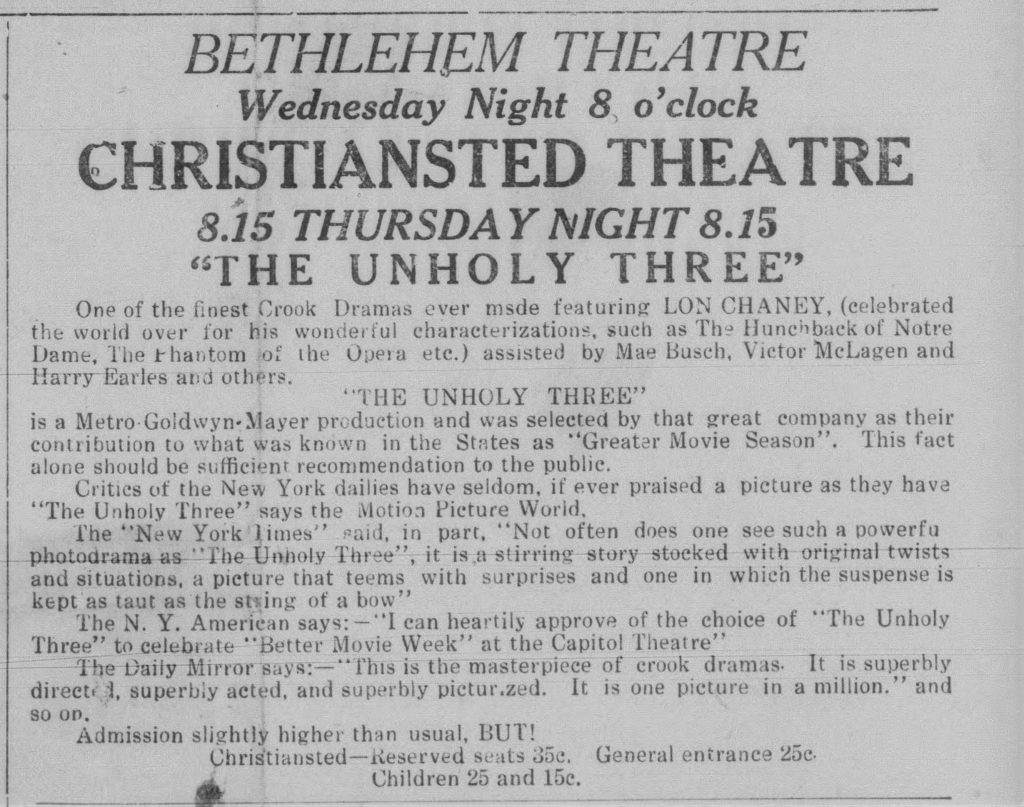
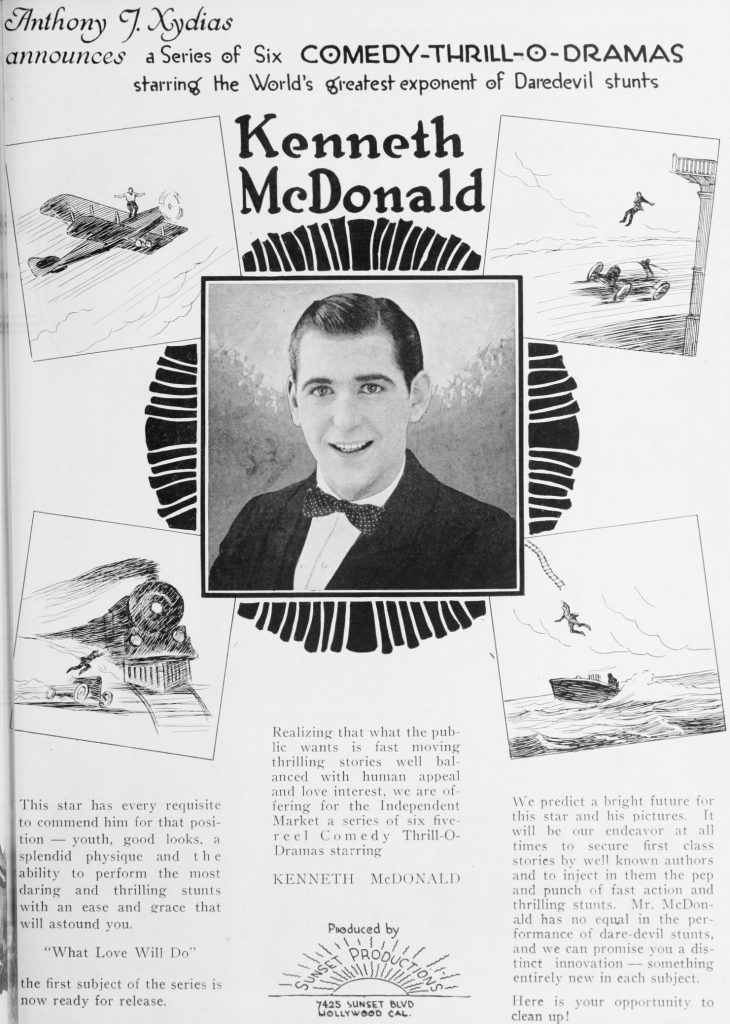
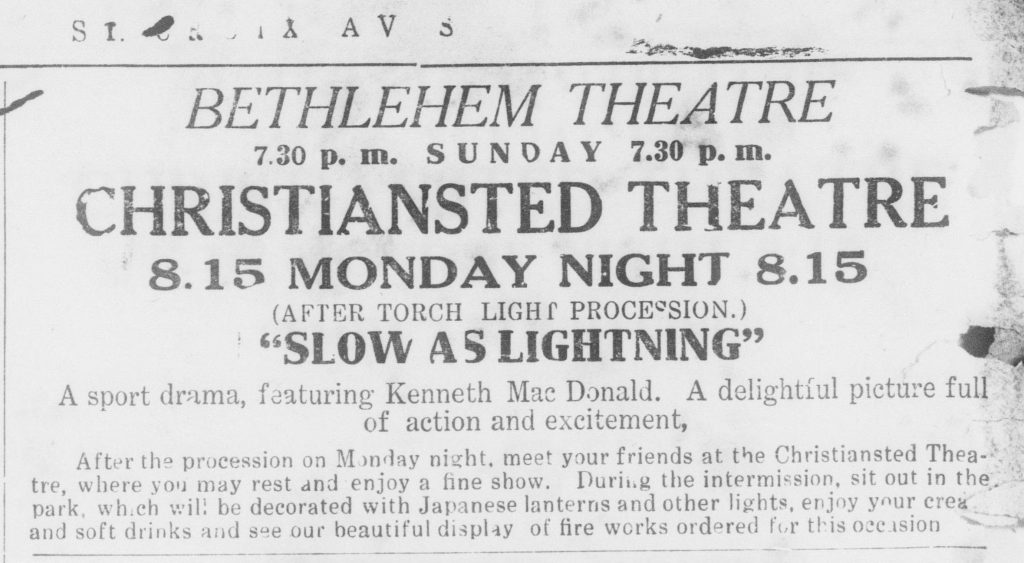
Further Reading
Mondello, Bob. “Remembering Hollywood’s Hays Code, 40 Years on.” NPR. August 8, 2008.
https://www.npr.org/2008/08/08/93301189/remembering-hollywoods-hays-code-40-years-on
Lewis, Maria. “Early Hollywood and the Hays Code.” ACMI. January 14 2021.
https://www.acmi.net.au/stories-and-ideas/early-hollywood-and-hays-code/
Motion Picture Association of America. Production Code Administration records. Margaret Herrick Library Digital Collections.
https://digitalcollections.oscars.org/digital/collection/p15759coll30
“Censored: Wielding the Red Pen”. University of Virginia Library.
https://explore.lib.virginia.edu/exhibits/show/censored/walkthrough/film1
Kramer, Fritzi. Movies Silently: Celebrate Silent Film.
https://moviessilently.com/
McCauley, Elizabeth. “A Century of Film Censorship.” Backstory. October 7, 2016.
https://backstoryradio.org/blog/a-century-of-film-censorship/
